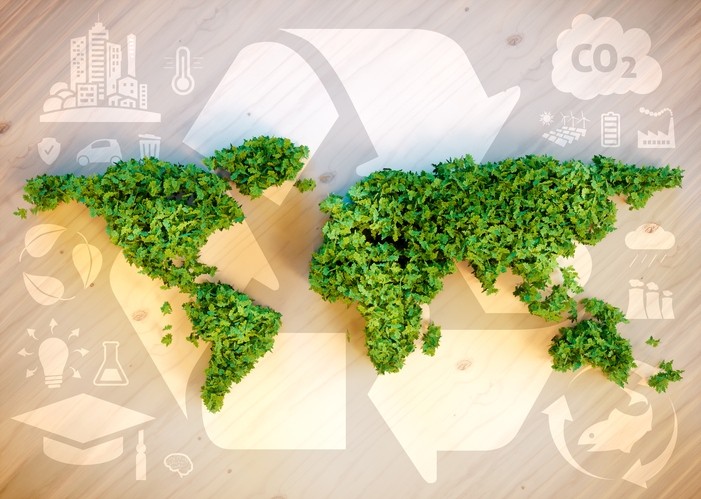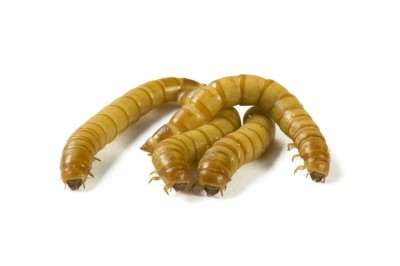Mealworm meal falls short when compared to fishmeal or soy in LCA

“Results indicate that mealworm meal production currently has higher environmental impacts, especially energy demand, than [the] production of other sources of protein used in animal feed,” wrote the researchers in the Journal of Cleaner Production.
French insect producer, Ynsect, provided data for the study, while the French National Research Agency (ANR) provided financial support for the work.
The authors, based at French national research institutes, INRA and IRSTEA, said they carried out a life cycle assessment (LCA) from cradle to mill gate of mealworm meal, considering five categories: cumulative energy demand (CED), climate change (CC), acidification potential (AP), eutrophication potential (EP), and land use (LU).
Their results for those categories assessed for one kg of mealworm meal were: 141.3 MJ for cumulative energy demand, 3.8 kg CO2 eq for climate change, 25.6 g SO2 eq for acidification potential, 15.0 g PO4 eq for eutrophication potential, and 4.1 m2a for land use.
“Per kg of protein, these impacts are higher than those of soybean or fish meal.”
To compare environmental impacts of mealworm larvae meal to those of other sources of protein in livestock and aquaculture feeds, the authors said LCA was performed for soymeal from Brazil and fishmeal from Peru.
“Ingredient inventories came from the ECOALIM database (Wilfart et al., 2016). To compare the ingredients on the same basis, we used a functional unit of 1 kg of protein. Values were calculated from the original data using the mean protein content of the ingredients: 43.3% for soybean meal, 62.6% for fish meal, and 65.0% for mealworm larvae meal.”
Rearing substrates
The authors found that producing the mealworm diet contributes greatly to land use (LU, 87%), eutrophication potential (EP, 82%) and acidification potential (AP, 66%), and nearly half of climate change (CC, 48%). “These results are due to the composition of the diet, which is mostly cereal flours, and to the FCR of mealworm larvae.”
They found the farm stage contributes relatively little to the total impact (<20%, except for CED) because mealworms and their litter have few emissions (<1% of CC). Since their feeding substrate is quite dry, no emissions are generated by fermentation.
They said the farm contributes most to cumulative energy demand (CED) (29%) and CC (19%), due to electricity consumption for cooling and ventilating to regulate environmental conditions and for sifting machines used to separate larvae from the litter.
The authors noted the processing stage contributes most to CED due to electricity consumption (56%) as this stage includes energy-intensive steps such as boiling, centrifugation, and drying.
Need for alternative feed protein raw materials
The authors argue that any potential disruptions in international soy and fishmeal supply chains could jeopardize the European feed industry, triggering the need for other protein sources.
They said fishmeal and fish oils resources are finite, adding that EU reliance on imported soybean meal for feed, widely used in livestock and fish diets due to its high digestibility and high protein content, has been questioned on ecological grounds.
Lack of environmental data
Insects have received growing interest in the list of potential protein sources to help reduce Europe’s feed protein deficit. However, the environmental performance of insect production systems is not widely reported in the literature, they said.
“Only one study examines the environmental performance of mealworm and superworm (Zophobas morio) larvae with LCA applied from a cradle-to-farm-gate perspective, i.e. from resource extraction to production of live larvae (Oonincx and de Boer, 2012), and several studies have used its data (Halloran et al., 2016; Smetana et al., 2015; van Huis et al., 2013).”
The authors noted other studies that focus on the water footprint of mealworms (Miglietta et al., 2015) or on gas emissions of insects (Oonincx et al., 2010), and that there are a few LCA studies exist for H. illucens, another insect that has great potential as animal feed (Halloran et al., 2016; Rustad, 2016; Salomone et al., 2017; Smetana et al., 2016; and van Zanten et al., 2015).
Their research looked to plug that gap somewhat. “To support decision making, studies using consequential LCA methodology are required to determine the future direction of this sector,” they added.
Using mealworm meal in animal feed does not currently decrease the negative environmental impacts of livestock, concluded the authors.
However, insect farming as a type of livestock production is still in its infancy, and thus little is known about how to optimize several critical steps in a mass-rearing system, they added.
“Several research teams across the world are beginning to address these issues, and several recent studies highlight the potential to reach a positive environmental outcome.”
Source: Journal of Cleaner Production
Online ahead of publication: https://doi.org/10.1016/j.jclepro.2017.09.054
Title: Mealworm meal for animal feed: Environmental assessment and sensitivity analysis to guide future prospects
A. Thévenot, J.L. Rivera, A. Wilfart, F. Maillard, M. Hassouna, T. Senga-Kiesse, S.Le Féon, J. Aubin








